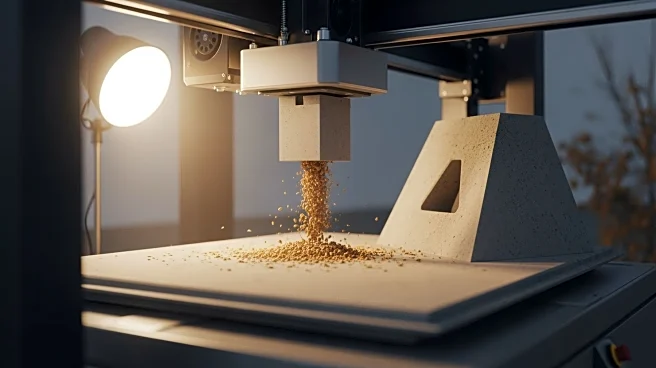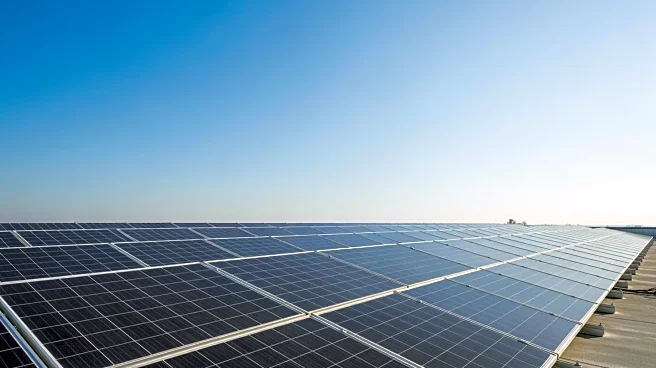What's Happening?
A recent study published in Scientific Reports explores the use of agricultural waste fibers to improve the sustainability and performance of 3D concrete printing. The research highlights how natural fiber reinforcement
can enhance mechanical strength and printability, offering a more efficient and eco-friendly path forward for construction practices. The study tested various natural fibers, including date palm and coconut, to improve concrete's properties while promoting circular economy principles. The findings suggest that incorporating these fibers into 3D concrete printing can reduce labor, material waste, and construction time, while enabling complex, customized designs.
Why It's Important?
The construction industry is a significant contributor to greenhouse gas emissions and resource depletion. By integrating agricultural waste fibers into 3D concrete printing, the industry can reduce its environmental impact and support sustainable practices. This approach aligns with circular economy principles by repurposing waste materials, potentially lowering the carbon footprint of construction projects. The study's findings could lead to more sustainable building methods, particularly in regions with abundant agricultural by-products, enhancing the industry's transition towards environmentally responsible practices.
What's Next?
Future research should focus on optimizing fiber combinations, assessing long-term durability, and exploring large-scale implementation for industrial use. The study recommends investigating hybrid fiber systems and the long-term effects of untreated natural fibers on durability and performance. A deeper understanding of fiber-matrix interactions and printability will be essential for advancing this technology.
Beyond the Headlines
The integration of natural fibers into 3D concrete printing represents a significant step toward eco-efficient and resilient construction practices. This development could lead to long-term shifts in building methods, promoting sustainability and reducing reliance on traditional, resource-intensive materials.











